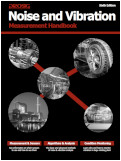There are many ways to calculate speech articulation index and each has its advantages in different applications. Prosig’s DATS includes four methods for evaluating the Articulation Index as seen in the table below.
| Method | Use | Range |
|---|---|---|
| ANSI S3.5-1969 | General speech intelligibility | 0 to 1 |
| Vehicle AI | Specific for automotive use | 0 to 100% |
| Room AI | Room acoustics | 0 to 100% |
| Unikeller | Specialist use | -ve to +ve |
All four methods are essentially the same and they are based upon the concept of an ‘idealised speech spectrum’.
In all cases the basic interpretation of the speech articulation index (AI) value is that the higher the value then the easier it is to hear the spoken word.
Essentially, if a particular background noise third octave spectrum level is above the corresponding idealised spectrum level then the contribution to AI is zero. If it is below then it will make a contribution. However, if the difference is greater than 30dB then the contribution is 30dB. Each contribution is multiplied by a weighting factor specific to the particular third octave band. The sum of all the contributions is the AI value.
ANSI S3.5-1969
The ANSI version is calculated according to ANSI S3.5-1969. It is a factor between 0 and 1. The ANSI version uses 1/3 Octaves from bands 200Hz to 5kHz. In the ANSI scheme each measured third octave band level is first compared with its corresponding lower equivalent noise level and the higher of the two values is used. Any missing third octave data value is replaced by its corresponding lower equivalent noise level before being used to calculate its contribution. The ANSI scheme also attempts to take account of the existing overall noise level to adjust the levels of the Idealised Spectrum. The idea here is that if the background noise level changes then we speak either louder or softer as appropriate. That is it is strictly concerned with speech intelligibility and is not as concerned with the volume or loudness required.
Vehicle AI
The vehicle orientated AI uses a fixed Idealised Spectrum and gives a percentage in the range 0 to 100%. This uses modified weighting factors which give greater emphasis to the low frequency region typically found in most vehicles and it uses 1/3 Octaves in the 200Hz to 6.3kHz region.
Rooms AI
The Rooms AI also uses a fixed Idealised Spectrum and 1/3 Octaves in the 200Hz to 6.3kHz region. It gives a percentage in the range 0 to 100%. The Rooms AI uses weighting factors which are appropriate for architectural acoustics. It has a different calculation scheme that ensures values are calculated to 1% and it uses a variable range for each third Octave band. For example the 200Hz band has a range of just 1dB and three comparison levels: 65 dB, 65.5 dB and 66 dB. The scheme here is that when the third octave level is less than a comparison level then 1% is added to the AI for each comparison level. Thus suppose we have a level of 56dB in the 200Hz band then the AI would increment by 3% as it is below 65 dB, below 65.5 dB and below 66 dB but if the noise level was 65.5 dB then only 1% would be added as it is only below 66.0 dB. There are 100 comparison levels so the Rooms AI only varies between 0.0% and 100%.
Unikeller AI
The Unikeller AI also uses its own fixed Idealised Spectrum and 1/3 Octaves in the 200Hz to 6.3kHz region. It gives a value which may be positive or negative. It does not limit the contribution as do the ANSI and Vehicle methods but simply computes the difference in dB between the idealised spectrum and the noise level and then just weights this difference as the contribution.
The third octave spectrum below illustrates the different speech articulation index measures.

James Wren
Latest posts by James Wren (see all)
- What Are dB, Noise Floor & Dynamic Range? - January 12, 2024
- How Do I Upsample and Downsample My Data? - January 27, 2017
- What Are Vibration, Torsional Vibration & Shaft Twist? - November 8, 2016





